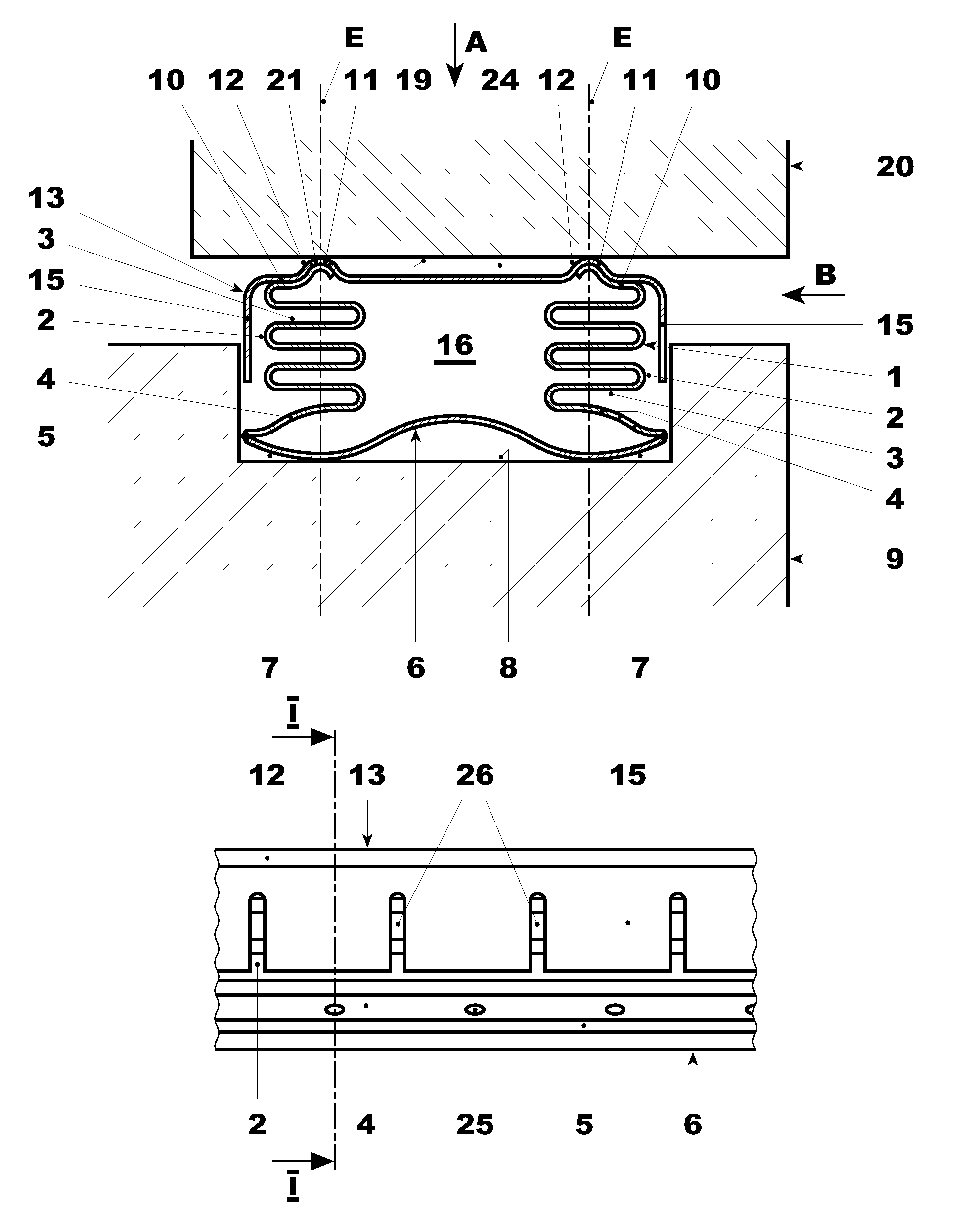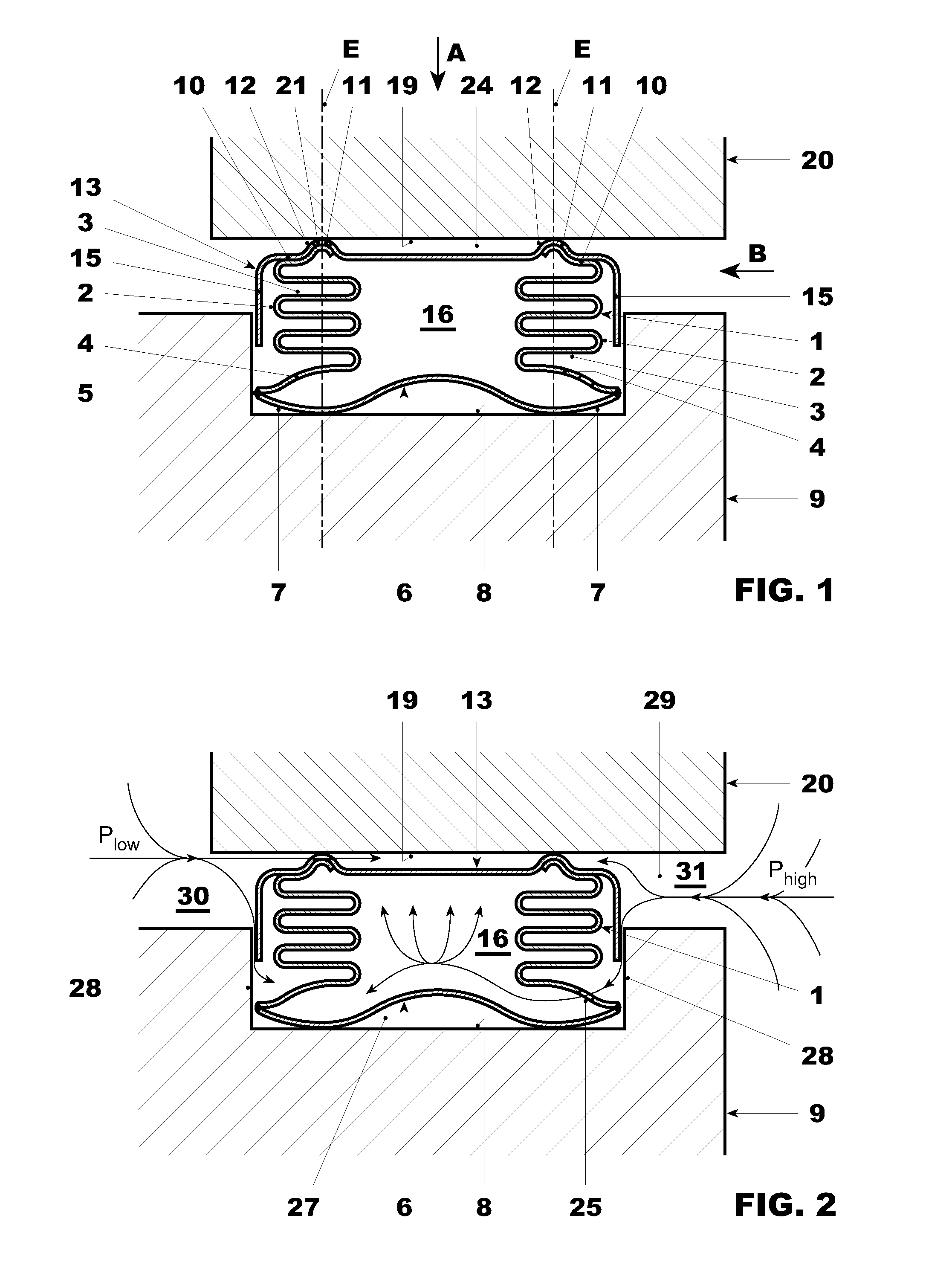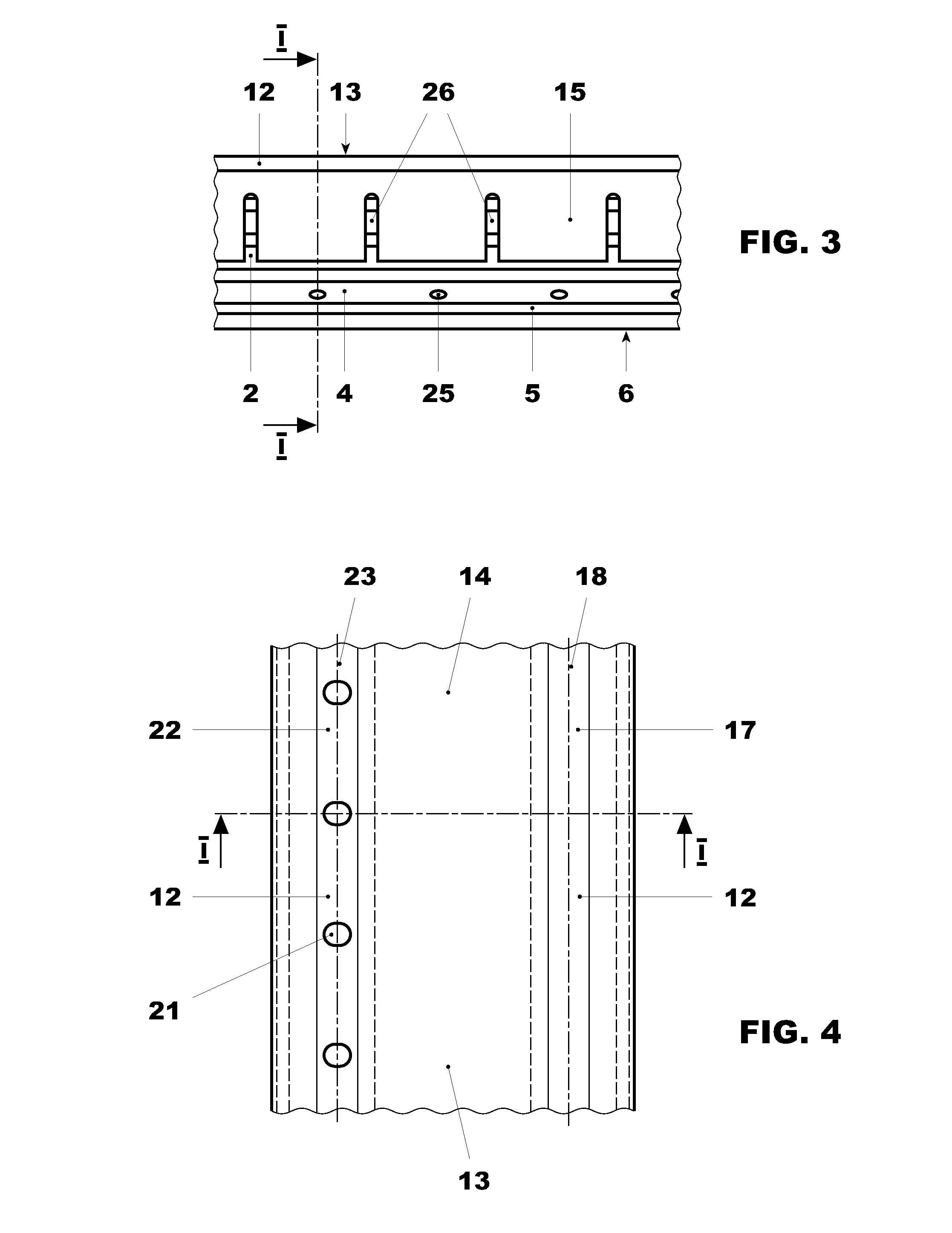Seal and seal arrangement for confining leakage flows between adjacent components of turbo-machines and gas turbines
a technology of sealing arrangement and adjacent components, which is applied in the direction of liquid fuel engines, cable terminations, lighting and heating apparatus, etc., can solve the disadvantages of the sealing capacity of the known seal, the inability of multi-piece embodiments of the known seal to bridge larger gaps, and the inability to bridge large gaps. , to achieve the effect of increasing the flexibility of the sealing element, and reducing the risk of leakag
- Summary
- Abstract
- Description
- Claims
- Application Information
AI Technical Summary
Benefits of technology
Problems solved by technology
Method used
Image
Examples
Embodiment Construction
[0025]A seal, as is shown in FIGS. 1 to 4, has an elastically deformable, thin-walled sealing element 1 formed of metal which in cross section has the shape of a bent band, having two adjacent rows of consecutive bent wall sections 2 which in each case are interconnected by a transversely extending wall section 3. In the exemplary embodiment which is shown, in each row there are six bent wall sections 2 which are interconnected by all together five transversely extending wall sections 3. This number of bent wall sections 2 in each row and the associated number of transversely extending wall sections 3 are only exemplary. The number could also be greater or smaller since they have an influence upon the desired extent of the elastic deformability of the sealing element 1.
[0026]As is evident from FIG. 1, the two rows of consecutive wall sections 2 and the transversely extending wall sections 3 which connect them are arranged so that in each row all the transversely extending wall secti...
PUM
 Login to View More
Login to View More Abstract
Description
Claims
Application Information
 Login to View More
Login to View More - R&D
- Intellectual Property
- Life Sciences
- Materials
- Tech Scout
- Unparalleled Data Quality
- Higher Quality Content
- 60% Fewer Hallucinations
Browse by: Latest US Patents, China's latest patents, Technical Efficacy Thesaurus, Application Domain, Technology Topic, Popular Technical Reports.
© 2025 PatSnap. All rights reserved.Legal|Privacy policy|Modern Slavery Act Transparency Statement|Sitemap|About US| Contact US: help@patsnap.com



